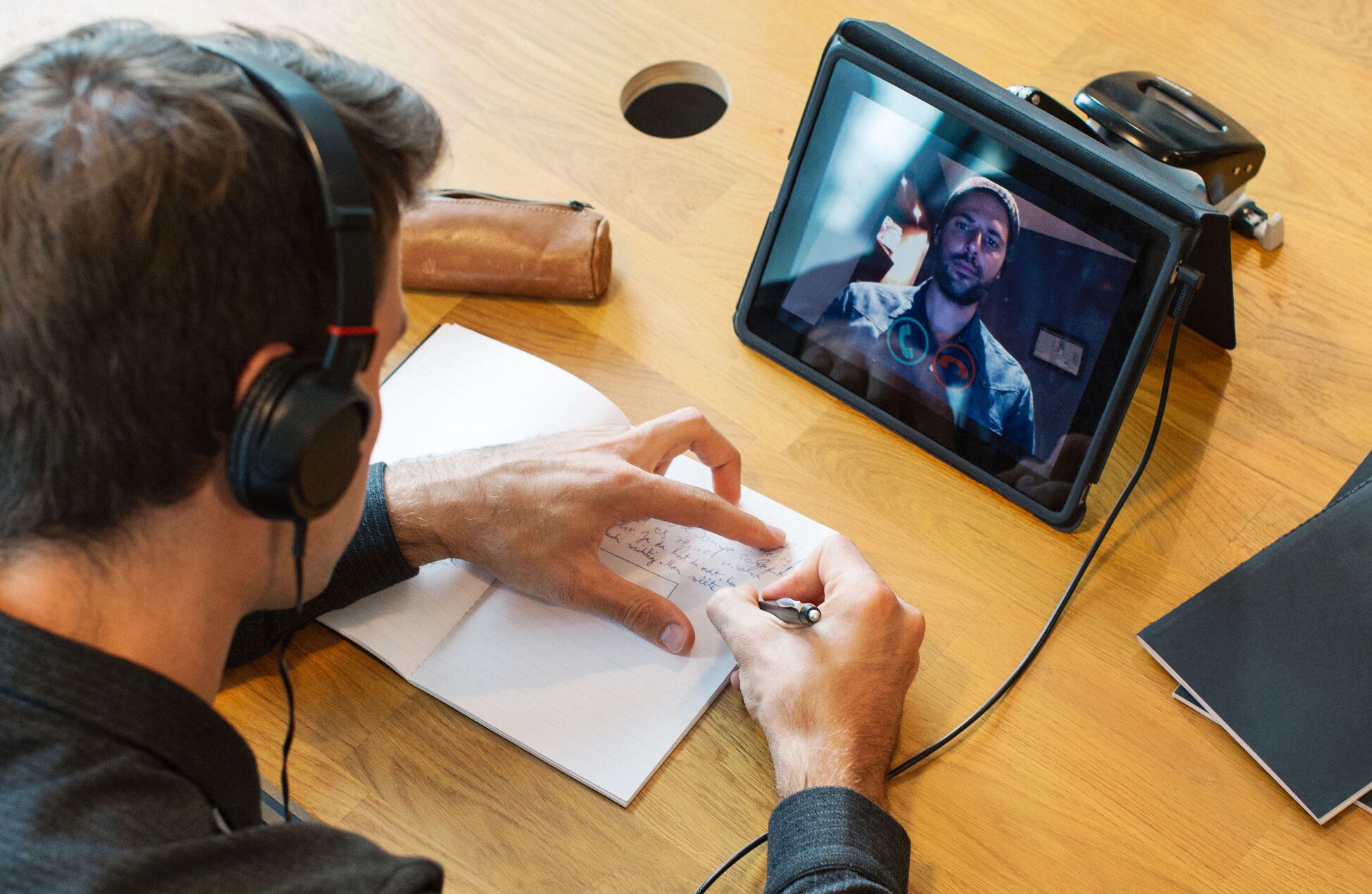Trust: The Evolution of Talent Platforms
authors are vetted experts in their fields and write on topics in which they are extremely knowledgeable. All of our content is peer reviewed and validated by world-class professionals.

Shifting Workplace Dynamics
In the 21st century, full-time employment does not hold the appeal it used to–roughly a quarter of those polled in 2018 said they planned to leave their full-time jobs within the next five years in favor of freelance work.
For many, the desire for flexible hours and work-life autonomy outweighs a steady paycheck and a designated working area. Millennials, who are now reaching their prime earning years, are prioritizing the lifestyle options remote freelancing offers, while Baby Boomers are retiring in droves. Major shifts are afoot.
This poses a challenge to procurement and hiring executives to timely source, vet, and retain highly skilled, project-based talent, especially in light of the skill and talent gap. Combined with record-high levels of employment, the talent shortage is even more disconcerting.
For organizations that don’t want talent shortages to stymie progress and competitiveness, talent platforms have evolved to offer elegant solutions to the problem.
David Francis—Research Director of Talent Tech Labs—has been closer to this sea change than most. He recently sat down with Staffing.com to discuss the talent platform evolution he’s witnessed, what companies stand to lose by not embracing these new working models, the keys to successful remote cultures, and what the future holds.
The Evolution of Talent Platforms
“Talent platforms are not a new phenomenon,” says Francis. “The concept has existed for decades, but a couple of things have changed.” Francis cites two major changes that have enabled online talent platforms to rise to the forefront of talent solutions.
“One is that the infrastructure to make it work has been a more recent development,” Francis says. “Before, if you were trying to browse one of these websites or find some workers in the early 2000s, you were doing it probably through a dial up modem and the underlying infrastructure didn't really exist.”
Two, Francis says, is trust. As a former research analyst at Staffing Industry Analysts, Francis has witnessed a palpable shift to rely on and trust these platforms. “I think you’ve got to give credit where credit is due,” he states. “Companies like Uber and Lyft demonstrated that you can trust [online talent] marketplaces. You can basically get into a car with a stranger that you've never met before.”
“In a business context, what it did, conceptually, was it created this implicit trust that two parties that don’t necessarily know each other (a driver and a passenger) can get together, do some work ad hoc (get a ride), and trust the platform (the phone app) that is intermediating the whole thing.”

Emerging Camps
When on-demand talent platforms like Toptal emerged, Francis says it split the incumbent industry into a few camps:
“There was one camp of companies that were pretty forward-thinking and could see the writing on the wall: ‘Maybe these guys aren't threatening us today, but we've got to figure this out now if we want to stay relevant in five or 10 years.’”
Francis says the second camp was the naysayers—organizations who thought the very idea of the human cloud is farcical and that companies would always turn to traditional staffing providers for contingent or independent workers.
Things get really interesting when Francis talks about the future of MSPs—managed service providers—companies which manage services or business functions on a subscription basis.
“I think they're probably the most at risk [for disruption],” Francis says. The newly-emerged talent platforms offer democratized, decentralized access to worldwide talent, and tools to manage the process, Francis says, which butts against the very ethos of an MSP: “Their whole business model is, ‘No, we need to centralize everything and you only do it through us,’” Francis says. “They've been really resistant to working with the platforms of the world because first, I don’t think they really understand the model and how to operationalize it, and second, they see it as a threat, which they probably should.”
Now, It’s All About the Talent
Despite shifting attitudes around where and how work is completed, Francis is quick to point out that these models—the concept of remote work in particular— “is butting against 200 years of an industrial complex.” There’s still work to be done, and Francis underlines a third critical shift as essential to winning the battle.
“The way staffing companies are going to win is by building good, tight relationships with high-quality candidates,” Francis says. “Historically, staffing companies haven't been particularly great about that. They've been more client-focused than they have been candidate-focused.”
To that end, some talent platforms are going niche. The Mom Project, for example, is a niche talent provider with its own AI match engine that evaluates work structure and behavioral considerations in tandem with technical fit. This ultimately creates a more comprehensive match for working women and the companies that need their expertise. More than half of the platform’s participating companies offer remote capability.
“We’ve Always Done It This Way”
Although more than 43% of today’s workforce is comprised of remote workers, there is still hesitancy and pushback from large enterprises with aged, ingrained management practices. Whether due to lack of technology, lack of internal processes, or unwillingness to change management models, remote work runs counter-culture to some corporations and is a step out of their comfort zone. In spite of dynamic changes in technology and a volatile market economy, the “don’t fix what’s not broken” approach feels safer and more secure.
“I think it's just ingrained management practices,” Francis states. “Companies are actively embracing it [remote work]. I think it's just a company by company culture thing, and it's something that you've just got to get over.”
To Francis, shifting to remote-driven talent platforms is only a matter of time. “It's partially like fear of the unknown,” he points out. “It's just new muscles you've got to work out.”
Missing the Boat
It is understandable that the thought of creating a new management model, developing new processes, and re-aligning roles and company culture is daunting. But playing it “safe” doesn’t prepare businesses to respond to sudden shifts in the marketplace or keep up with the digital skills gap.
Businesses that do not utilize the benefits of on-demand platforms run the risk of forever playing catch up to those that do. “The ship has already started to sail,” Francis says, “so if you don't offer it [remote work], you're basically excluding yourself from an increasingly large number of people that prefer to work that way. If you're not flexible, that's going to indicate to a candidate that this might not be the kind of company that they even want to go work for in the first place.”
He also says that common misconceptions about freelancing hinder the development of remote work initiatives: the idea that remote workers are generally uncommitted to the team or company culture and that productivity is lower for remote workers. (This has been disproven time and time again.)
According to Todd Katz, MetLife’s Executive Vice President of Group Benefits:
Employees say, 'I’ll feel more connected if you give me the flexibility that allows me to blend my work and private life in a way that works for me. If you do that, I’m going to be a more loyal employee.
Corporations are just beginning to understand that not offering the ability to work remotely on some level makes it difficult to recruit today’s skilled talent, let alone retain it, regardless of the salary package and other perks. In Francis’ experience, after compensation, candidates prioritize work-life balance, which now undeniably includes whether or not they can work remotely. “If you're not offering that, you're going to make it increasingly difficult to recruit talent in the first place,” Francis warns. “Not just remote talent, but even people that are there in the office. Even if they are there in the office, they're still going to be thinking about remote work.”

3 Keys to Successful Remote Cultures
On-demand work is not an all-or-nothing approach, but most enterprises have some aspect of their business that can be remotely served. Francis predicts a future in which companies rely on hybridized teams: distributed teams in tandem with on-site personnel.
Remote work is less about the technology and more about the process, he says. “It’s just a matter of figuring out the roadmap, who the people are that need to be involved, and actually doing the work.” He cites three core principles as being critical for successful remote teams: communication, coordination, and culture.
Communication. Videoconferencing is the next best thing to face-to-face. Hearing tone and inflection and observing body language helps avoid miscues and misinterpretation. “One thing we do,” says Francis, “is we do a daily standup. Every day, no matter what, even if there's nothing specific or exciting that we're working on, we still check in with each other. It's been working great.”
Francis works with a team that is a hybrid between on-site and remote. Communication is particularly important, he emphasizes.
It's easy to maybe feel lost as a remote worker. You've got all of these side conversations that are happening that you're not—just because of the distance that's there—involved in. So you've got to be more proactive and deliberate about making sure remote workers are part of the conversation, part of the team.
Coordination. Creating an on-demand platform within the parameters of an established corporate culture is achievable with planning and buy-in, even within large enterprises. This was demonstrated by Microsoft and described in a case study Francis authored called “How a Massive Company Built and Launched an Internal Freelancer Program.” One of the most notable aspects of the Microsoft platform is that it is a hand-crafted tool designed and built by Microsoft employees, independent of its managed service provider.
Borne of a need for cloud access to source and engage freelance talent in a short time frame, Microsoft developed and launched its own freelance program with guidance and input from a cross-functional team. “They were forced, almost, to go and create this thing from scratch separately,” says Francis.
From inception to launch, Microsoft employees were engaged in the process. Francis points out several factors that were key to its success:
- They were excited about changing the status quo with a new model for talent.
- They were passionate about the architecture of the platform.
- They were legitimately excited about and proud of being a part of something new.
Through embracing the program, Microsoft employees were able to leverage the platform to increase productivity and complete “on the shelf” projects that were previously on hold due to employee, supply, or budget shortages.
Culture. In order for any sized enterprise to make remote work profitable and streamlined, corporate support must be communicated and observed. The message from the top needs to be, “this is how we're going to work and this is why we're working in this particular way. This is okay,” says Francis.
At Talent Tech Labs, Francis says it was made explicitly clear up front that checking in was not intended to be Big Brother-esque, but more like, “Hey, this is what we need to do in order to make sure this [remote work] is going to work.” Ensuring a cohesive company messaging that reinforces a remote culture is critical, Francis says. “You kind of need to buy in that this is an okay way to work. It's one thing to offer a perk, and it's another thing if in practice if you kind of disincentivize that perk. You have to create a company culture where it's not just offered, but it's in practice okay.”

The Future of Staffing Services and Talent Providers
Almost half of HR professionals worldwide surveyed by PwC predict at least 20% of their workforce will be contractors or temporary workers by 2022.
Francis’ number one prediction for the future of staffing correlates to PwC’s survey. “In five years, all these remote work platforms—if you look at the total amount of income generated through them, on the aggregate, I suspect it is going to roughly double,” he says. “The industry is going to be about two to three times the size as it is today, in five years.”
He also cites technology as a major roadblock to future progress. “Staffing companies have got to do better with technology,” he says. “They've got to make it easier for candidates and clients to be able to connect together directly, which historically they've not done.”
The Bigger Picture
If a staffing company or enterprise can make it easier for a candidate to find work by removing location from the equation, there is value in the product. Francis’ prediction is that the companies that do well in the future will be those that are driven by a mission. “I think they are probably going to inspire their employees well, and probably do well longer term,” he says. “At the end of the day, you're putting people to work. You're creating and increasing economic opportunity for people that historically may not have had it.”
Francis predicts that larger organizations will end up infusing remote options into their work culture, but in a reactionary way, in response to increasing scarcity of qualified candidates. “That's not necessarily the right motivation to be doing it,” he warns. “You should be doing it to try and attract the best employees and to try to get the best performance out of them.”
“What's going to end up happening is that the market is going to demand it. Candidates are going to work a certain way, and if you want to work with the best people, you're going to have to offer that."
